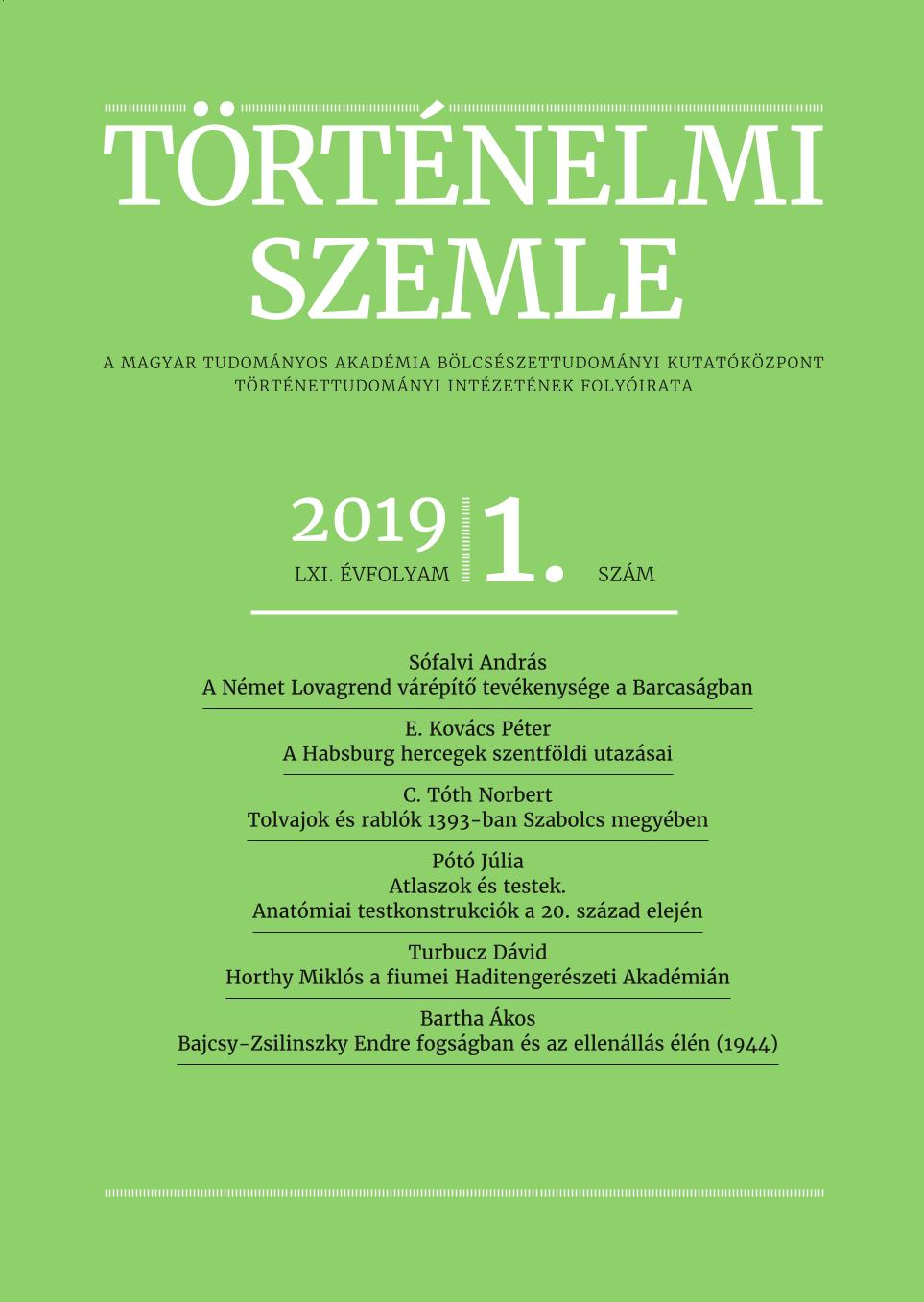Tolvajok és rablók 1393-ban Szabolcs megyében
Thiefs and Robbers in Szabolcs County in 1393
Author(s): Norbert C. TóthSubject(s): 13th to 14th Centuries
Published by: Magyar Tudományos Akadémia Bölcsészettudományi Kutatóközpont Történettudományi Intézet
Keywords: reign of King Sigismund; letter of proscription; Szabolcs and Bereg county; county authorities; malefactors
Summary/Abstract: In the second half of October 1393, a judicial assembly (congregatio generalis) was held upon the order of King Sigismund for the nobility and other people, of whatever condition, of the counties of Szabolcs and Bereg. The chief aim of the assembly was the proscription (proscriptio) of the local malefactors. The ensuing list (registrum) was put up by the county authorities, that is, the ispán or his deputy and the county magistrates, and the twelve jurors (iuratus assessor) elected for the occasion, and then put to writing by the person who was in charge of the whole congregation. The charter so drafted was at the same time regarded as a letter of sentence, for each of the persons whose name was contained therein was consequently treated as a public malefactor, who could be captured, killed or otherwise punished at will. The newly discovered source analysed in the present paper is an important one in several regards. Alongside containing, quite naturally, the names of thiefs and robbers, as well as their concealers, it also gives the names of the persons constituting the county authorities and the body of jurors. Its importance lies primarily in this latter, for no noble magistrate of Szabolcs county is known to us from the period between 1386 and 1398. The paper analsyses the careers of these noble magistrates and jurors, determining their place within the local noble society. The convicts who figure in the list have been examined according to a cluster of criteria (legal status, place of residence, crimes committed). Moreover, as two similar lists of proscription have survived from the years 1399 and 1435, it was possible to make comparisons both between the respective bodies of jurors and the social groups of „criminal society”.
Journal: Történelmi Szemle
- Issue Year: 2019
- Issue No: 01
- Page Range: 149-164
- Page Count: 16
- Language: Hungarian

